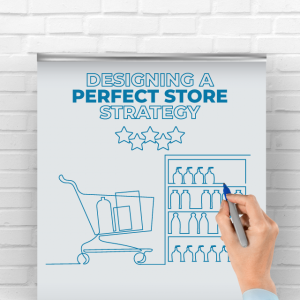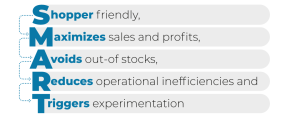Designing a Perfect Store Strategy
In a previous blog, we mentioned that technology is key to achieving the Perfect Store. However, achieving the Perfect Store must include an execution strategy and a framework for building a program.
This entry will delve a little deeper into what is involved in building a Perfect Store. But first, let's see what lies behind this concept:

As we already explained, a Perfect Store is one in which consumers can find the right products in the right location, presented in the best possible way to influence buying behavior. Moreover, with consumers growing more demanding than ever, companies need to achieve a solid and differentiated brand experience, which is desirable and critical to any business's growth.
That said, implementing a Perfect Store requires a carefully crafted strategy. Designing it can be challenging; it is an ongoing task, considering the competitive industry, the ever-changing products, promotions, and shoppers' demands. Therefore, the Perfect Store Strategy must be continuously defined, adjusted, and monitored.
The goal? To boost sales, collect data, and drive growth, all while understanding and adapting to customers' needs.
Correctly identifying the customer mindset:
People buy on emotion. The biggest companies pay thousands of dollars every year to study their shoppers' purchase trends to influence their purchase decisions in favor of their business. As a result, data collection is critical, whether from third-party auditors, shopper panels, or retailers.
Collecting insights into customer behavior, such as the composition of baskets, repeat purchases, and impulse purchases, helps brands obtain maximum impact by making their products more visible, adjusting promotions, and fine-tuning POS.
Monitoring planogram execution:
The main action takes place on the shelf. Correctly executing a planogram will generate what we call a "SMART" shelf: ⬇️

That said, monitoring planogram execution involves guidelines such as:
Proper placement of products: defining the optimal location, space share, and secondary display locations.
Right assortment: having an adequate range of products that meet the needs of the shoppers.
Proper promotion: brand promotions that actively and positively change shopper behavior.
It is very important to accurately and objectively measure how well you achieve KPIs. The right data collection team is required to monitor planogram execution and thus correctly implement a SMART shelf. Data collection and subsequent analysis help brands identify what drives sales in any given category and how to optimize the parameters involved for their benefit.
Retailers often rely on their field teams to collect data in-store. However, that represents several challenges:
Data collection often involves investing time that the team could otherwise spend on improving other areas of the store.
As it is difficult for retailer reps to cover all the stores, companies might only get a partial picture of retail execution.
Choosing the right auditing tools is crucial, so a system that includes IA and effectively displays the collected data in a dashboard to produce KPIs is necessary.
SmartSpotter provides the appropriate auditing tools for your company! Contact us for more information.
